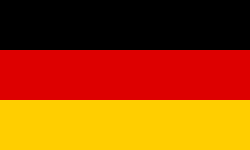Information
You can choose between a mechanical dobby, electronic interface, or Computer Dobby 2. A dobby or interface is a programmable heald selector. It solves the problem of limited space for treadles in a loom and thus the number of healds that can be operated. What's more, weaving with a dobby is much more comfortable. Tying up while standing or kneeling is a thing of the past, and anyone looking to the future realizes that with a dobby, you can enjoy the pleasure of weaving for longer.
With the mechanical dobby, you program the pattern, just as you do when tying up the treadles. The so-called selection bars are equipped with numbered holes that correspond to the shafts. By inserting pins into these holes, you determine which shafts are raised. A pedal is used to move the interconnected selection bars forward or backward. The mechanical dobby comes with 20 selection bars. The electronic interface will give you almost unlimited shaft combinations using either the built in Louet web interface software, or a computer and 3rd party software from Fiberworks PCW, Patternland, Weavemaker, Weave It, WeavePoint, Winweef or Pro Weave, which all work with the Louët electronic interface.
The Computer Dobby 2 is the latest control system for the Louët Megado. In addition to computer control, it can also be operated wirelessly via the Louët Web Interface. To do this, you use a web browser such as Internet Explorer or Google Chrome on your computer, tablet, iPad, or phone. More information about our dobby looms can be found here.No other loom with so many shafts allows you to tread a large jump so easily. The tension of the warp plays no role in this. The treadle is height-adjustable and can therefore be adapted to the weaver's preferences.
Like Delta and Spring, Octado and Megado are also equipped with the famous Louët compensation device, which allows you to adjust and control the desired warp tension. Both looms have a heald frame equipped with a friction foot brake, so that you can boom up while sitting at the loom during weaving.
Dobby looms have a dobby system, which is used to program the harness combinations for the weave pattern. Dobby is short for ′′draw boy′′ which refers to the weaver’s helper who was used to control the warp thread by pulling on draw threads. The dobby mechanism replaces the treadle/lam combination of the traditional floor looms. The performance of a multi-harness loom is vastly improved by using a dobby mechanism, as it overcomes the major problems associated with the use of a large number of treadles. A dobby loom allows you to select the combination of shafts for every shed opening you wish to make. These are ‘finished’ in sequence, which can be done either mechanically or electronically.
The basic noise level of the Louët Dobby 2 is virtually zero. With the ‘old’ dobby, the sound of the fan was always audible. With the Louët Dobby 2, less cooling is required because a separate power adapter is included.
Extra information
| Material: | Lacquered ash hardwood |
|---|---|
| Weight: |
|
| Measurements: | Megado 70 - 121 x 127 x 131 cm (47 5/8" x 50" x 51 5/8") Megado 110 - 161 x 127 x 131 cm (63 3/8" x 50" x 51 5/8") Megado 130 - 181 x 127 x 131 cm (71 1/4" x 50" x 51 5/8"). |
Artikel codes
WP0152: Megado 40-32 – without control
WP0134: Megado 70-32 – without control
WP0154: Megado 90-32 – without control
WP0140: Megado 110-32 – without control
WP0146: Megado 130-32 – without control
Accessoires
- Adjustable bench - 59 - 72 cm (23 1/4"-28 3/8")
- Tilting set for bench
- Second warp beam with back beam
- Sectional warp beam
- Flying Dutchman shuttle
- Fly shuttle device
- Treadle height adjusting blocks
- Mechanical dobby, including 60 program bars
- Program bars per ten
- Electronic dobby



?unique=93bacd2)